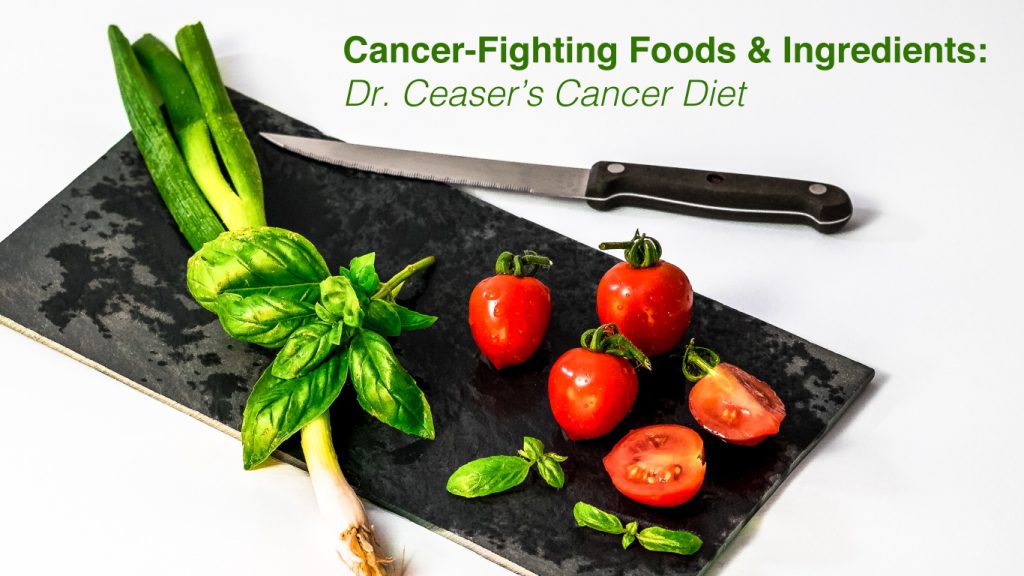
Thank you for reading our Summer Digital Wellness Report. In each issue, we will explore a variety of health and wellness topics that are of interest to our patients. This includes informative videos, in-depth blogs, wellness facts and tidbits, and introductions to our teammates.
In this issue we are focusing on getting back to work, going into the office; and some helpful tips and tricks to keep in mind while preparing to go back to work.
The Topics:
- Healthy meal prep
- Cancer-fighting foods
- A physiotherapist outlines how to tell what your body is saying.
- Meet Dr. Roch
- Product Feature: Noom App
- Fun Facts
Healthy meal prep

As everyone is starting to return to the office, they will need to start packing lunches and snacks to take with them. Here are some tips and tricks in meal prepping, to make it easier when it’s time to go back.
- Start small
- If you have never created a meal plan or are getting back into the routine after a long break, it might feel a bit daunting. Begin by planning only a few meals or snacks for the week ahead. Eventually, you’ll figure out which planning strategies work best, and you can slowly build upon your plan by adding more meals as you see fit.
- Consider each food group
- The healthiest meal plan emphasizes whole foods, such as fruits, vegetables, legumes, whole grains, high-quality protein, and healthy fats, while limiting sources of refined grains, added sugars, and excess salt.
- Get organized
- Good organization is a key component to any successful meal plan.
- An organized kitchen, pantry, and refrigerator make everything from menu creation, grocery shopping, and meal prep a breeze, as you’ll know exactly what you have on hand and where your tools and ingredients are.
- Invest in quality storage containers
- If you’re currently working with a cupboard full of mismatched containers with missing lids, you might find the meal prep process frustrating. It’s well worth your time and money to invest in high-quality containers.
- Avoid shopping when you’re hungry
- We all know this too well: you go for one item and walk away with a full cart of groceries. Don’t go to the grocery store when you’re hungry, as doing so can increase the risk of impulse buys that you’re likely to regret later.
- Plan for repurposing leftovers
- If you’re not a fan of leftovers, think about how you can repurpose them so they don’t feel like leftovers. For example, if you roast a whole chicken with root vegetables for dinner, shred the leftover chicken and use it for tacos, soup, or as a salad topping for lunch the next day.
- Batch cook
- Batch cooking is when you prepare large quantities of individual foods for the purpose of using them in different ways throughout the week. This method is especially useful if you don’t have much time to spend cooking during the week.Use your freezer
- Cooking certain foods or meals in large batches and freezing them for later is a great way to save time, reduce waste, and stretch your food budget — all at the same time.
- Pre-portion your meals
- Pre-portioning your meals into individual containers is an excellent meal prep strategy, especially if you’re trying to consume a specific amount of food.
- Wash and prep fruits and vegetables right away
- If your goal is to eat more fresh fruits and vegetables, try washing and preparing them as soon as you get home from the farmer’s market or grocery store.
- If you open your refrigerator to find a freshly prepared fruit salad or carrot and celery sticks ready for snacking, you’re more likely to reach for those items when you’re hungry.
- Use your slow or pressure cooker
- Slow and pressure cookers can be lifesavers for meal prep, especially if you don’t have time to stand over a stove. These tools allow for more freedom and hands-off cooking, so you can meal prep while simultaneously finishing other chores or running errands.
- Vary your menu
- It’s easy to get stuck in a dieting rut and eat the same foods day after day. To avoid this, make a point to try cooking new foods or meals at regular intervals.
- Make it enjoyable
- You’re more likely to stick to your new meal planning habit if it’s something you enjoy doing. Instead of thinking of it as something you have to do, try to mentally reframe it as a form of self-care.
- Use a meal prep app
Use these tips and tricks when creating your lunches or dinners to help make meal prepping a breeze.
Cancer-fighting foods and ingredients

To find medical advice regarding diets that are recommended for preventing cancer takes a lot of online navigation. Here, Winnipeg naturopath, Dr. Ceaser, outlines the use of scientifically validated food for aid in the treatment of cancer. Eating a plant-based diet every day, full of fruits, vegetables, whole grains, and foods rich in vitamin C, is full of health benefits, and can reduce the risk of cancers and tumour growth. This simple diet inhibits the growth of cancer cells in different types of cancer. It is easy to follow and does not require hours of preparation. Click here to read the whole article. (https://drceaser.com/cancer-fighting-foods-ingredients-dr-ceasers-cancer-diet)
Feeling Pain Shouldn’t be Normal: A Physiotherapist Outlines How to Tell What Your Body is Saying
In this interview, Dr. Roch speaks to Kim, a physiotherapist, about how she found physiotherapy, how physiotherapy helps people maximize mobility; and she introduces a fun concept called “chair dancing.”
Today’s Topic:
- Kim’s physiotherapy philosophies
- About Kim and her journey with physiotherapy
- Key takeaways for patients
- Signs for when you should see a physiotherapist
- Physio words of wisdom
Kim’s main message and takeaway is that she wants her clients to learn how to be more curious about what their body is telling them. For example, when you feel pain, realize that your body is trying to tell you something.
Meet Dr. Roch:
 Dr. Dan Roch was born and raised in St. Vital, right here in Winnipeg. In 2004 he received his B. Sc. (bachelor of sciences) and DC (doctorate of chiropractic) at the Logan College of Chiropractic in St. Louis, Mo.
Dr. Dan Roch was born and raised in St. Vital, right here in Winnipeg. In 2004 he received his B. Sc. (bachelor of sciences) and DC (doctorate of chiropractic) at the Logan College of Chiropractic in St. Louis, Mo.
After graduation, Dr. Roch returned to Winnipeg to be near his family and friends. He purchased a chiropractic practice in Gimli, Man., and has worked since 2005 to build a thriving rural practice. Dr. Roch joined the Centre for Natural Pain Solutions in April 2009. The interdisciplinary team approach was an important drawing card as it has provided the unique opportunity for ongoing learning and sharing with other clinic doctors.
In 2005, Dr. Roch chose to pursue a postgraduate diplomate in chiropractic neurology. He studied with the Carrick Institute, attending seminars all over the world to pursue his interest in chiropractic neurology. He spent over 300 hours in seminar, and spent even more time in self-study.
In 2010, Dr. Roch received his postdoctoral diplomate degree in chiropractic neurology. He is currently accredited by the American Chiropractic Neurology Board – it is the specialty certification agency for the chiropractic profession that is fully accredited by the National Commission for Certification Agencies and the National Organization for Competency Assurance. Only seven chiropractors in Canada are current diplomats, and there is no equivalent board in Canada.
Please feel free to contact him if you have any questions:
Product feature: Noom app
Noom is an app that is built to help you either lose weight or feel healthy — or both. By asking you a series of questions to create a personalized plan based on your demographic info, habits and behaviours, activity and nutrition, and your goals.
At the core of your Noom journey is our psychology-based weight-loss course, a series of 10 mini-courses that you complete at your own pace.
Every mini-course will help you gain specific knowledge, tools, and skills that help you change your habits, lose weight and make progress far beyond the scale.
To set you up for success, your course also includes state-of-the-art tools:
- Food logging with over 1 million food items in Noom’s food database and 1 million scannable barcodes
- Over 1,000 interactive lessons
- A one-on-one coaching experience with personalized goal setting
- Hundreds of simple, healthy recipes
- Unlimited group support
Noom will help you ditch the idea of “good” foods and “bad” foods and develop a healthier relationship with food. Spoiler alert: It doesn’t involve skipping meals, eating salads all day, or cutting carbs (unless you’re slicing a sandwich).
Noom will also cover a variety of other fun topics like the psychology of weight loss, mindful eating, joyful movement, the science of metabolism, the 10 types of hunger, self-experimentation, emotional health, decision making, self-care, and so much more.
At the end of your journey, you’ll have earned the title of Noom Master and have a set of healthy habits to help you keep the weight off for good and lead a healthier, more fulfilling life.
On average, Noomers lose 18 lb. in 16 weeks, and over 86 per cent of Noomers keep the weight off beyond one year.
To learn more about Noom, click here.
Fun facts
- Chicken contains 266 per cent more fat than it did 50 years ago. A study has claimed that chicken, now, has more fat than proteins.
- The most stolen food in the world is “cheese.”. As per reports, four per cent of the total cheese produced globally is stolen.
- Peanuts can be used to make dynamite. The oil derived from peanuts can be processed to produce glycerol. This, in turn, can be used to make nitroglycerin, one of the constituents of dynamite.
- Chocolate was once used as currency. The Maya civilization used it as money.
- Pure honey has an incredibly long shelf life. It won’t spoil and can last up to 3,000 years.
- The wax used to coat candies and cars is the same. Carnauba, also called Brazil wax and palm wax, is not only used to cover the little gummy candies, but also cars to make them look shiny.
- Ripe cranberries will bounce like rubber balls.
